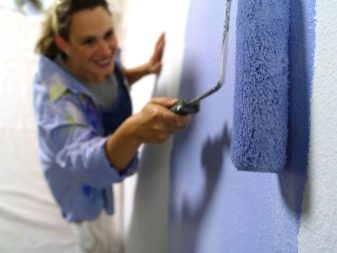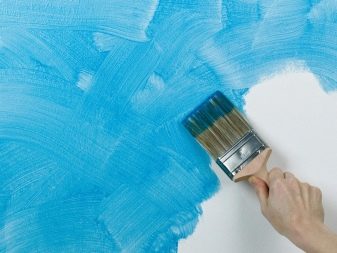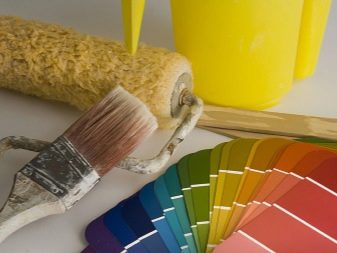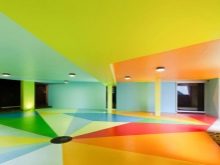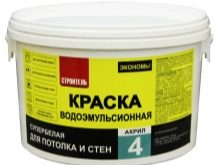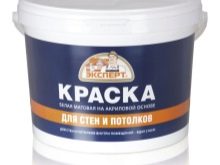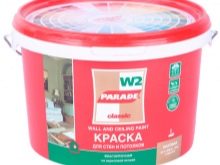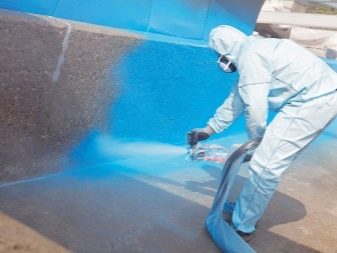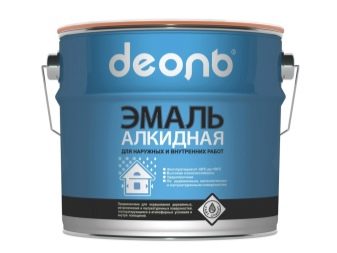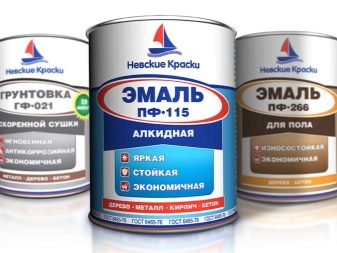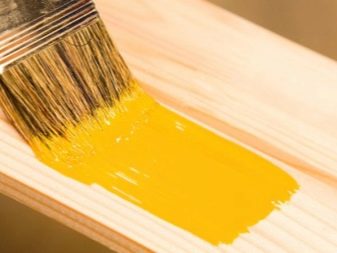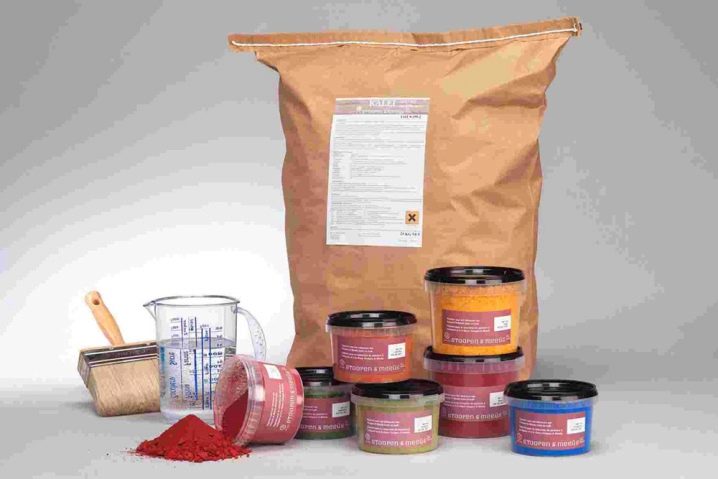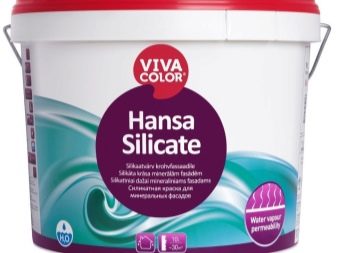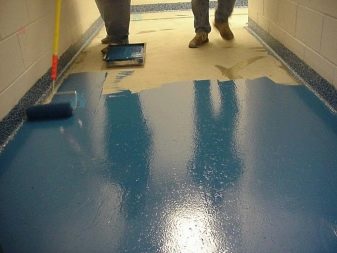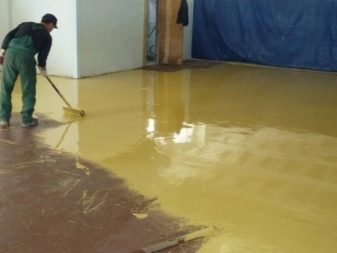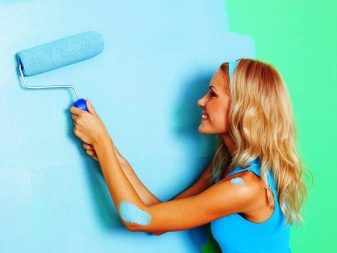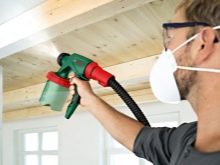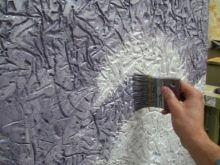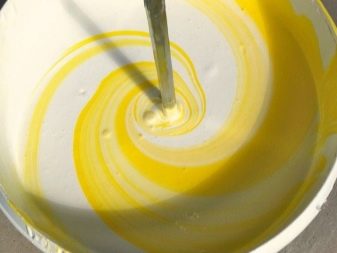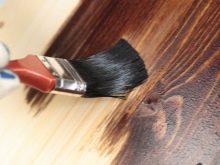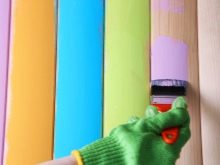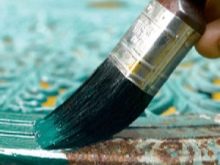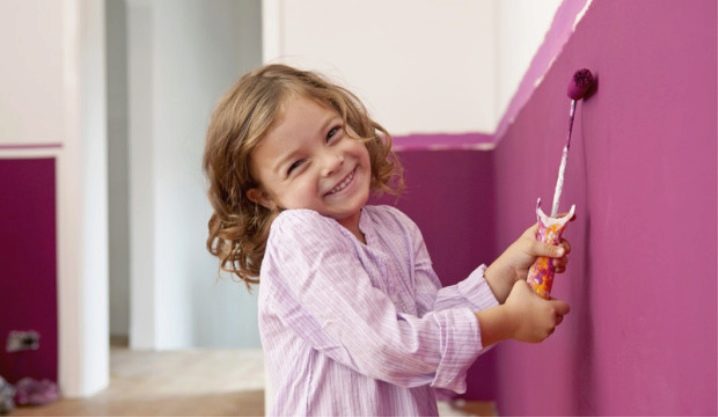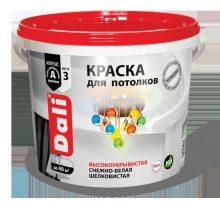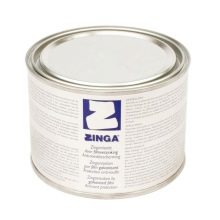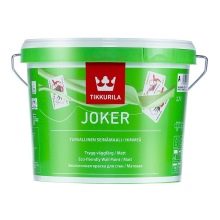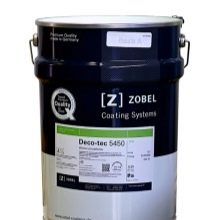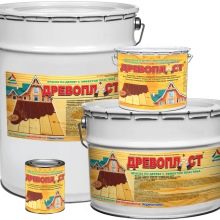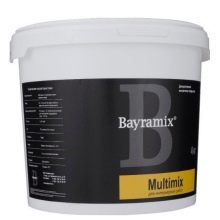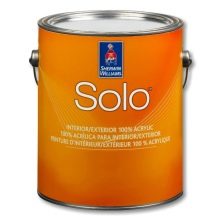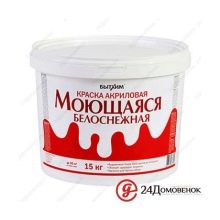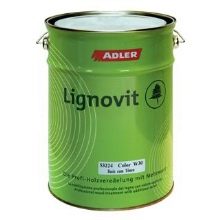The subtleties of choosing paint for interior work
Paints are one of the universal materials used both to protect products and to decorate surfaces. The modern market offers many varieties of such products. Particular attention should be paid to the compositions for interior work. They differ in practicality and physical parameters of the protective layer. These factors are important to consider when choosing this type of paint.
Special features
Paints are special solutions that have a uniform consistency. Conventionally, these products can be divided into two groups: facade solutions and mixtures for interior work. There are also universal formulations that are suitable for any operating conditions.
Paints for internal use are radically different from each other. They have different properties:
- Moisture resistant. After drying, a strong film is formed on the surface that does not allow water to pass through. This type of paint is suitable for use in the bathroom or in the kitchen.
- Strength. This parameter is important for apartments with a large number of inhabitants. The material must resist abrasion well and retain its original properties throughout the entire period of operation. But not all interior paints have such properties. This is important to consider when choosing products.
- Environmental friendliness. This factor is present in varying degrees for each type of solution. Materials for internal use after drying do not emit any harmful substances into the air, thus not affecting human health.
This type of solutions is distinguished by its uniqueness and practicality. A variety of shades allows you to choose the paint for almost any room. The market offers modifications for both domestic conditions and industrial facilities where there are special requirements for durability and durability.
Types and characteristics
Paint for interior work is a general concept that unites in this group practically all types of mixtures found on the market. Depending on the structure and composition of these solutions can be divided into several large species.
Emulsion paint
The main component of such mixtures is water, often serving as a solvent. Among the advantages of such products can be distinguished environmental friendliness and fire safety (non-flammable paints). The composition of the solutions includes only natural ingredients that do not affect the environment and humans. Another advantage can be considered the absence of an unpleasant odor that accompanies other types of mixtures.
To get a strong and durable layer, the surface is preferably primed for painting with special liquids.
Depending on the composition, emulsion paints are further divided into several groups:
- water-emulsion and water-dispersed mixtures. These solutions are almost identical in composition. They differ only in resistance to moisture. Water-based paints are much worse to resist a wet environment, but differ in a wide selection of color shades.The color of many of them can be changed by adding color to the structure of the liquid;
- acrylic. Paints of this type are based on acrylic resin, which is mixed with fine dust of natural or artificial origin. A feature of the mixtures is high resistance to mechanical stress. The film repels water well, but it does not let air through, which is important for some materials. The only drawback of acrylic paint is only its high price compared with similar products;
- polyvinyl acetate. This product is the cheapest because the paints are practically unable to resist water and are easily washed off with a damp cloth. The advantage of these mixtures can be considered their absolute environmental friendliness and safety. Many manufacturers add various components to the composition in order to improve technical performance;
- latex. Latex-based blends are also very popular today. The solution dries quickly, which allows to obtain the desired effect within 60-80 minutes after applying the paint. Latex has unique characteristics that lead tothat after drying, the top layer perfectly repels water. The color of the film does not change even after a significant period of operation.
Washable latex paints are widely used as they are easily suitable for painting structural wallpaper, decorative plasters, ceramic tiles and protecting plasterboard surfaces (ceilings, walls, partitions and others);
- silicone. Mixtures are made on the basis of special mineral components. This allows you to paint with their help almost all types of plasters and other similar materials. The binding element is a silicone resin, which holds the dye well with itself. Dry fluid for several days depending on the specific composition and conditions of drying. It should be mentioned that the film formed on the surface, passes air very well, but repels water molecules. Therefore, these solutions are versatile, but rarely used because of their high cost.
Alkyd
These paints were made on the basis of alkyds, which after drying form a very strong film.The drying time of these solutions reached 2 days, which is not always practical in the modern world. Alkyd mixtures during the drying emit harmful volatile substances into the air. It is possible to work with such paints only in protective clothes and respirators. But at the same time indoors, they are quite common, since after drying they become harmless and repel water well.
Enamel
The main component of this solution is a different kind of varnish. Enamels are versatile, as they can be used both outside and indoors. The resulting layer dries quite quickly (it all depends on its thickness) and easily transfers ultraviolet radiation. Paints possess an optimum ratio of durability and water tightness.
Glue
Compounds of this kind are made from water-based organic polymers. Products are marketed as dry blends. To get the paint, it must be diluted with water in the proportion specified by the manufacturer. Among the advantages are a wide range of colors. Materials of this type are of limited use, since the top layer is easily washed off with water, and also destroyed by carbon dioxide.
Experts recommend using these products only in rooms with low humidity.
Silicate
These are unique solutions, as they consist of liquid glass. Mineral alkaline mixtures are added to the structure to bind it. After solidification, the top layer is well breathable and able to withstand significant temperature fluctuations. The only drawback can be considered the minimum resistance to moisture. Apply the mixture for painting concrete surfaces in need of decoration.
Polymer cement
Materials of this type appeared on the market relatively recently. In many ways, the products are similar to silicate mixtures. The main components of polymer paints are white Portland cement, ground lime, light-resistant pigments and water dispersion. To bind all these components, synthetic latex and polyvinyl acetate emulsions are added to the composition.
The compositions are used to paint concrete, brick or wood surfaces. Some varieties can be used to cover reinforced concrete structures. Apply the solutions can only be at a temperature not lower than +2 degrees.
Polyester
Paints of this type are dry mixes, which are obtained in the process of homogenization of various substances. Applied to the metal surface using the electrostatic method. Rarely used for interior decoration of domestic premises, as in some cases, sintering of paint can occur at very high temperatures.
Criterias of choice
Selection of paint for interior work is a rather complicated and responsible procedure. Here you need to take into account many factors, among which there are several main ones.
Type of room
Very often, these mixtures are used in the repair of apartments or private houses. Here is the painting of doors, wooden baseboards, and many other coatings. The optimal solution for domestic premises is latex paint. It well protects the surface from corrosion, and also has high gloss and durability. Finishing the bathroom is performed only with the help of solutions that can tolerate high humidity.
In most cases, these products include alkyd compounds, but it is undesirable to use them.
Universal material is enamel, which can be used in any premises. It can be easily applied both on top of wallpaper, and on textured walls.
Materials
Many mixtures are universal, as they can cover different surfaces. These products include acrylic, water-dispersion and silicate compositions. They can be used for painting either on plaster or brick, or for wooden floors or window frames. If you need to cover the floor parquet, then you should apply oil or enamel formulations that perfectly tolerate significant loads. Ecopol is used infrequently in construction, for its protection it is recommended to use latex-based products or various types of enamels.
Particular attention should be paid to the use of glass and other similar materials. Paint them only with acrylic, latex or other similar mixtures. It is important that they uniformly fill the structure of the material, as well as pass air into the product. Painting of stone or rubber products is possible only with specialized compositions.They can be made on any basis, but it is important to have special additives that allow you to get a strong and durable bond of the film with the base.
Colour
This factor is not fundamental today, as manufacturers represent a variety of colors. But some of them (polymer-cement and others) are only white, which limits the environment of their use. But today, most solutions can be tinted with special dyes. This allows you to achieve the desired shade when painting wood or floor tiles.
Please note that in this way you can change not only the color, but also the texture. Here it is important that the paint fit the material and under the basic design of the room. If this factor is not decisive, then the quality of the product should be considered, and then its appearance.
Properties
Products are manufactured with various additives that can drastically change the physical characteristics of paints. These features are important to consider when choosing. Some types of compounds are electrically conductive, so they need to be used only in dry rooms, where the minimum risk of electric shock.
If you still need to protect the metal from rust, it is important to acquire paints that are deeply absorbed into the structure of the material. note that to remove these substances with their help is impossible. Therefore, the metal must be pre-cleaned.
Paints for wood or concrete can be supplemented with special compounds that minimize the risk of fungus or mold.
There are other criteria, among which it is possible to single out security for a person. Compounds based on water are considered the most environmentally friendly, as they not only do not smell, but also consist of natural and non-toxic substances.
Manufacturers: review and reviews
One of the criteria when choosing a paint for internal use is its brand and manufacturer. In most cases, well-known models are of high quality, which is noted by consumers who have chosen these paints for use in the repair process. Most often, positive reviews recently receive such popular brands:
- Dali. This type of paint is used to protect the metal from corrosion. People especially like the fact that the mixture can be applied even on top of a small layer of rust.Apply solutions for almost all types of metals, as well as products coated with galvanization.
- Zinga Materials intended for painting metals. A strong layer forms on the surface of the material, which can be compared with galvanizing only. This is due to the fact that the solution contains zinc, which forms the main protective film.
- Tikkurila. The products of this company is very popular and needs no introduction. The company produces both wood paints and universal alkyd and other products. The compositions of this brand are of high quality, safety and a wide color range, and this has earned excellent consumer reviews.
- Zobel. German brand that produces paints for wooden surfaces. Among the positive qualities are the unique protective properties, as well as high resistance of the film to ultraviolet radiation. Mixtures withstand significant temperature differences.
- Drevoplast. The company produces protective enamels based on alkyds. In most cases, the solutions are used to coat wood products.The uniform consistency of the mixture allows you to evenly distribute it throughout the base. The frozen film resembles liquid plastic in its tactile sensations, but it also allows air to pass well, which is important for wood.
- Bayramix. Acrylic paints of this company are made on the basis of marble chips. Here you can find both ordinary easily washable and waterproof varieties of solutions.
- Adler Lignovit Color. Under this brand produce acrylic compositions for wood. Paints are versatile, as they can be used inside and outside the house. Among the positive characteristics, users note high elasticity and minimal risk of flaking.
- Sherwin williams. The company produces the so-called rubber paints, which are used to paint concrete floors. The solution is not afraid of biological and chemical irritants, and also applies to environmentally friendly compounds. The advantage of paint is the presence of antistatic effect, as well as high elasticity, contributing to minimal damage to the upper layer.
- "Bytkhim". Under this brand you can find special acrylic enamels, which include polyurethane.This solution is intended to cover concrete floors.
- Teknos, Biofa. Manufacturers specialize in the manufacture of polyurethane paints for concrete floors. The advantages of this product are high mechanical strength and chemical resistance. But it is undesirable to use these solutions in everyday life, since they emit a lot of harmful substances during drying.
Choosing paint for interior work, you should first of all focus on its safety and the material for which it is intended.
How to choose a paint for walls or ceiling, see the following video.

